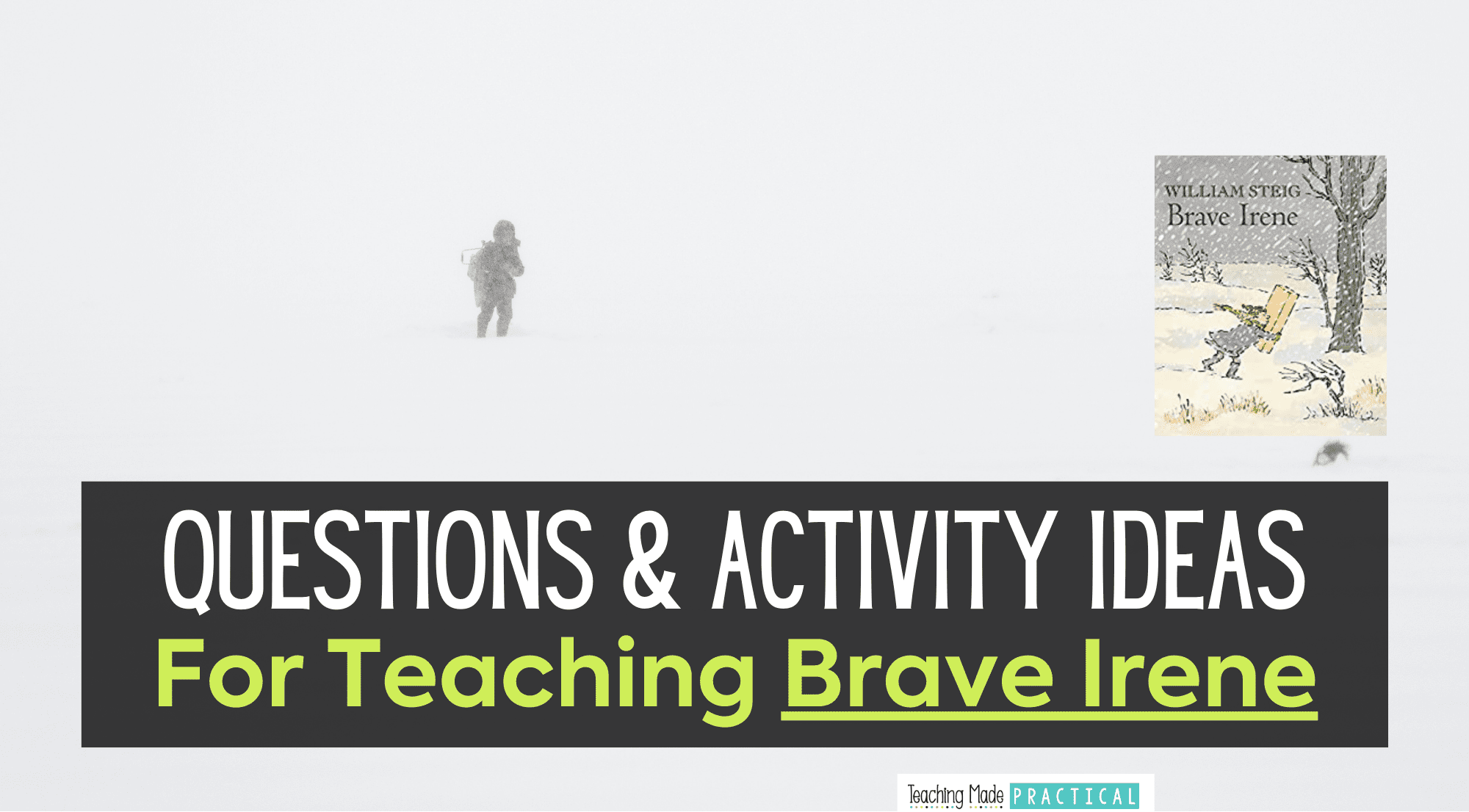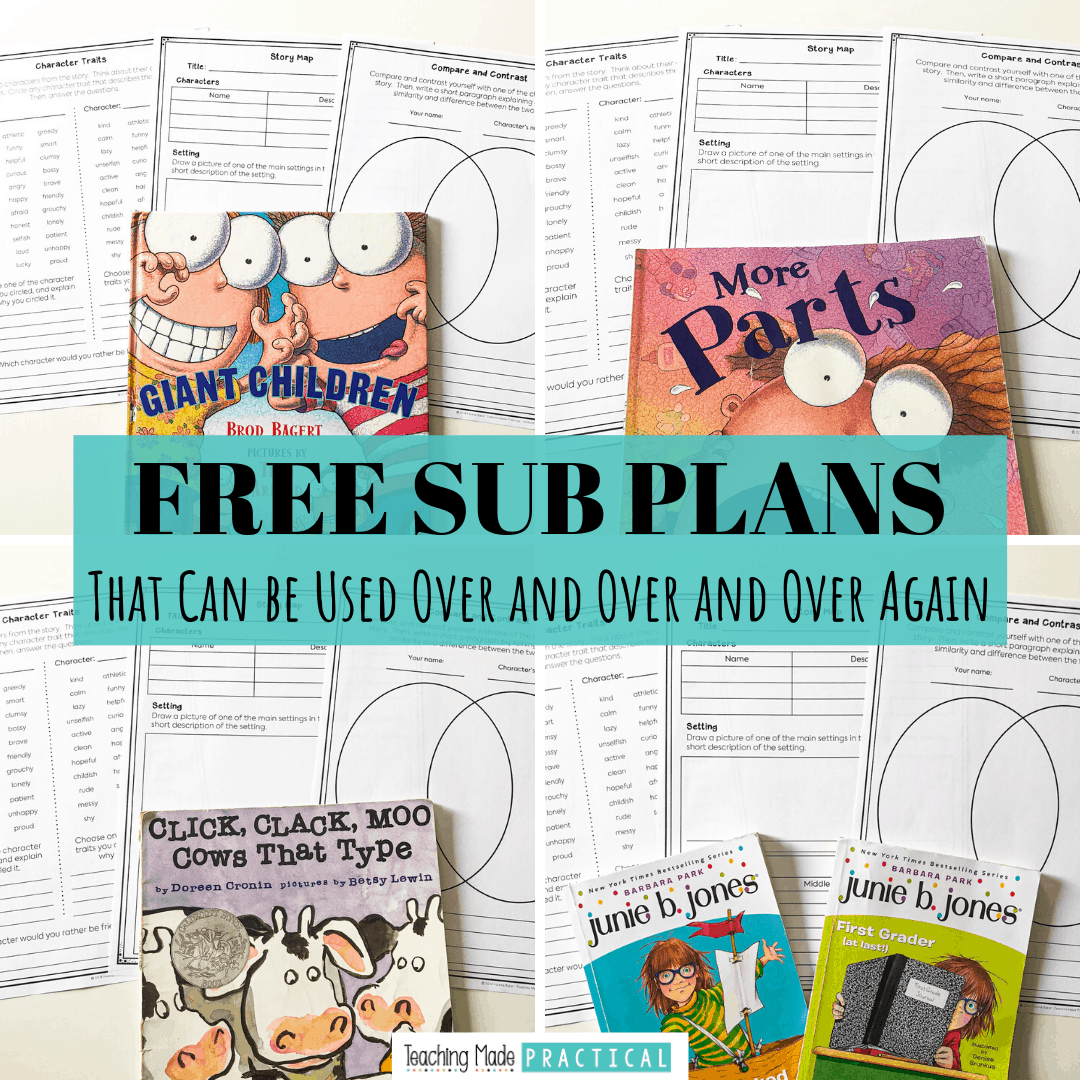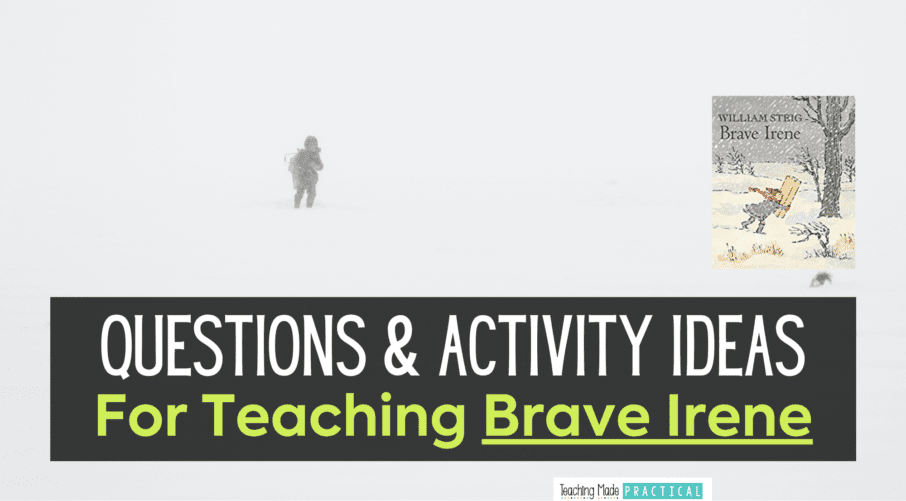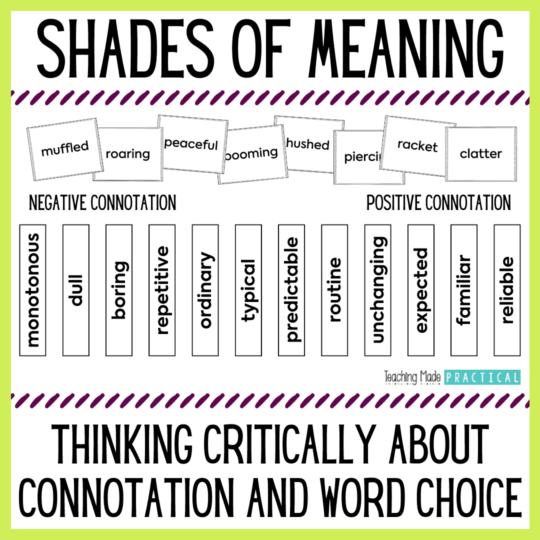
Brave Irene is an interesting story of a young girl that braves a blizzard in order to make sure the duchess has her dress in time for the ball.
The vocabulary and figurative language that the author William Steig uses is vivid and captivating. It lends itself to a variety of different reading activities to do along with reading the book.
Below, find questions and activity ideas to use in your 3rd, 4th, and 5th grade lesson plans while reading Brave Irene.
Some of the links are affiliate links, so if you click the link and choose to buy I might get a small compensation at no cost to you.
Summary of the Read Aloud Brave Irene
In Brave Irene, Irene's mother is a dressmaker. She finished sewing a gown for the duchess just in time for the ball, but was feeling sick and didn't think she could get it to her in time. Irene volunteers to take it to her, even though it is starting to snow.
Irene heads towards the duchess in the wind and snow. As she walks, the wind gets stronger, and the snow falls more heavily. The wind ripped open the box that the dress was in, and the dress flew away.
Irene decides to continue her trip so that she can explain to the duchess what happened. She falls into a hole and twists her ankle but continues on. As it gets darker, she gets lost, and the snow gets deeper. She falls off a small cliff and gets stuck in the snow. She finally frees herself and then decides to use the box she is still carrying as a sled.
As Irene nears the palace, she finds the dress on a tree and is able to present it to the duchess for the ball.
Note: At one point in the story, Irene contemplates giving up and letting her body freeze to death. Consider how you might want to address this with your students.
Before, During, and After Reading Questions for Brave Irene
Before Reading Questions
- Based on the title and illustrations, what predictions can you make about the main character?
- What does being brave me? When have you had to be brave?
- What problem do you think Irene might face? What are some possible solutions?
During Reading Questions
- Do you think Irene will make it to the duchess in time? Why or why not?
- What would you have done differently from Irene?
- What do you notice about how the author is describing the wind?
After Reading Questions
- Was getting the dress to the duchess worth the risk and danger that Irene endured?
- How did Irene show bravery?
- What other character traits did Irene display besides bravery?
Activity Ideas to Use In Your Brave Irene Lesson Plans
1. Review Personification and Other Types of Figurative Language
This is a fantastic book for helping students better understand personification. The author, William Steig, personifies the wind in a variety of ways.
As you are reading, take time to point out the different ways the author uses personification and other types of figurative language. Some examples from the book are below.
Personification
- "...the wind drove Irene along so rudely..."
- ..."the wind decided to put on a show.'
- "'Go home! the wind squalled. 'Irene...go hooooome...'"
- "The wind wrestled her for the package."
- "...the ill-tempered wind ripped the box open."
Similes
- "...the wind was howling like a wild animal."
- "...her good mother who smelled like fresh-baked bread."
- "The duchess in her gown was like a bright star in the sky."
Alliteration
- "the wind whirled"
- "the wind was worse"
- "delirious duchess"
Onomatopoeia
- "sloosh! thwump!"
These figurative language posters can help you as you teach figurative language, and this figurative language in poetry resource is a great way for students to practice identifying and understanding figurative language within text.
2. Think About Word Choice and Connotation
William Steig includes a variety of interesting vocabulary words in this children's book. Use this as an opportunity to help students think about word choice and connotation.
One fun way to do this would be to list all of the words the author uses to describe walking / running, and then have students sort them into a continuum. Some of those words are listed below.
- hurried
- stumble
- hop
- helter-skelter
- trudge
- shuffling
- plodding
- strode
Have students think about the different meanings behind these words, and then put them in order on a continuum. For example, you could have students sort the words from slowest moving to fastest moving.
Letting students discuss this with partners or small groups will lead to a better understanding of the connotations of these words.
Want some more fun, no prep practice with word choice and connotation? Check out this popular Shades of Meaning Resource.
3. Question the Author's Choice of Character Traits
The author chose to focus on the bravery of Irene, but there are many other character traits that could be used to describe Irene. Have students brainstorm other character traits of Irene.
You could use this free character trait list to help students think about other character traits, or use one of these ideas for building character trait vocabulary.
Note: You do not have to focus solely on positive character traits. Question the author's choice to use the word brave to describe Irene. Is it really brave for a small child to go walking through a blizzard in the dark in order to give someone a dress? Personally, I would consider that recklessness, not bravery.
4. Compare This Book with Other Books About Children Overcoming Obstacles
In this story, Irene persists throughout a blizzard in order to deliver a dress to the duchess. Compare her persistence to the determination of other main characters.
This list of books about children overcoming obstacles is a great place to start. Then, use one of these fun ideas for comparing and contrasting.
Never Stress Over Sub Plans Again!

Make copies, find a fiction book, and you'll be ready for any emergency that comes your way!



